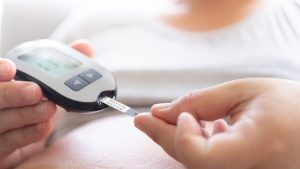Articles / Why older people should get the vaccine first


writer
Vice-Chancellor's Research Fellow, School of Health and Biomedical Sciences, RMIT University
0 hours
These are activities that expand general practice knowledge, skills and attitudes, related to your scope of practice.
0 hours
These are activities that require reflection on feedback about your work.
0 hours
These are activities that use your work data to ensure quality results.
These are activities that expand general practice knowledge, skills and attitudes, related to your scope of practice.
These are activities that require reflection on feedback about your work.
These are activities that use your work data to ensure quality results.
Several COVID-19 vaccines are in late-stage clinical trials. So discussion is turning to who should receive these vaccines first, should they be approved for use. Today, we discuss two options. One is to prioritise children. This article looks at the benefits of vaccinating older people first.
While we wait for further results from phase 3 trials, it’s clear that supply of any potential COVID vaccine would initially be limited.
Local authorities will need to prioritise distribution to specific groups, at least at first. So how might they make these decisions?
The general consensus is people with very high risk of exposure to COVID, such as workers in front line health-care and quarantine facilities, should be first.
Less clear is the question of who should be next. This group could include people with work, demographic or health characteristics that put them at high risk of either exposure or serious disease.
Following a National Cabinet meeting on Friday, the federal government indicated the elderly and vulnerable would be a priority group.
Here’s why prioritising older people to receive the earliest COVID vaccines is a good idea.
Vaccines work in several different ways, providing benefits to the individual and the community.
An obvious individual benefit is that vaccines can prevent infection in the person who is vaccinated. But vaccines can also reduce the amount of virus a person makes if they do end up becoming infected. This can reduce severe disease and reduce their likelihood of transmitting the virus to others.
All this leads to benefits for the community. If vaccine uptake is high enough and transmission is reduced, our collective (or herd) immunity can be used like a fire break. It blocks pathways of virus transmission and protects vulnerable people from infection, even when those people are not vaccinated.

Severe disease due to COVID is a critical health issue, with the potential to put significant stress on health-care systems and resources. But if vaccine supply is limited, do we:
The question is, how can a limited supply of vaccine have the most impact?
As we get older, our immune cells can become more difficult to activate, in response to the natural ageing process or other factors like chronic inflammation. As a result, vaccines often don’t protect older people as well as younger people.
Importantly, a phase 1 study with a BioNTech/Pfizer COVID vaccine candidate showed the size of the immune response was lower in older people, which may suggest reduced protection.
Because of this, the public might think prioritising vaccines for older people is a bad idea. Why give a vaccine to people who it won’t work as well in? But we should explore older people as a priority group for several reasons.
First, older people are bearing the brunt of severe disease from COVID. In Australia, nearly half of severe cases requiring intensive care, and more than 90% of deaths, have been people over 65.
Second, a potential vaccine may not protect as well in older people, but it should protect to a degree. As an example, the flu vaccine provides 60-70% protection in the general community, dropping to 30-40% protection in people over 65 — but even at that rate it’s still protecting a substantial number of older people.
Third, where a potential vaccine doesn’t prevent infection, it could still reduce severe disease. For example, in one study, the flu vaccine reduced the rate of severe disease in vaccinated people by 23% regardless of age group.
A modest improvement in cases or severe disease in older people could have a big impact on the overall burden of disease and death.
In particular, aged-care facilities should be considered a top priority. This environment is high risk, combining people at very high risk of severe disease and high-density accommodation. Vaccinating aged-care staff could prevent the virus getting in and vaccinating residents could minimise the consequences if it did.
Finally, some vaccines may work well in older people. For example, the Shingrix vaccine stunned the research community in 2015 by demonstrating over 90% protection against shingles in older people — a vast improvement on the previous Zostavax vaccine which provided only 50% protection.
While initial supply will be limited, we may end up with access to multiple COVID vaccines, which could allow us to prioritise potent vaccines for older people.
In any scenario, tackling complex questions around vaccine distribution will require specialist knowledge from across many disciplines.
We need to understand how the virus spreads in a given population, how the vaccine works in different groups within that population, who might be hesitant about the vaccine, how we can deliver the vaccine to a wide variety of people and many other factors.

Importantly, we’re still learning about this virus. It behaves differently in different communities, due to different environments, demographics, biology and behaviours. Strategies may differ in different regions and must adapt with our evolving understanding of the virus. There won’t be a “one size fits all” approach.
It’s also vital to keep in mind that a vaccine won’t be a silver bullet. Vaccines are not 100% protective and will take time to roll out. Public health measures such as rigorous testing, hand-washing, mask-wearing and a level of social distancing will remain important for some time.
There will be challenging and contentious decisions for initial access to COVID vaccines, but ultimately vaccine supply will become less restricted. It’s important to remember we all collectively benefit by shepherding certain groups to the front of the vaccine queue.
Kylie Quinn, Vice-Chancellor’s Research Fellow, School of Health and Biomedical Sciences, RMIT University
This article is republished from The Conversation under a Creative Commons license. Read the original article.
![]()

Managing Paediatric Anxiety in General Practice

OSA – Which Test for Which Patient

Musculoskeletal Health in Menopause

AHPRA-Proof Your Practice – Social Media Risks for GPs

writer
Vice-Chancellor's Research Fellow, School of Health and Biomedical Sciences, RMIT University




Strongly agree
Somewhat agree
Neutral
Somewhat disagree
strongly disagree
Listen to expert interviews.
Click to open in a new tab
Browse the latest articles from Healthed.
Once you confirm you’ve read this article you can complete a Patient Case Review to earn 0.5 hours CPD in the Reviewing Performance (RP) category.
Select ‘Confirm & learn‘ when you have read this article in its entirety and you will be taken to begin your Patient Case Review.
Menopause and MHT
Multiple sclerosis vs antibody disease
Using SGLT2 to reduce cardiovascular death in T2D
Peripheral arterial disease
